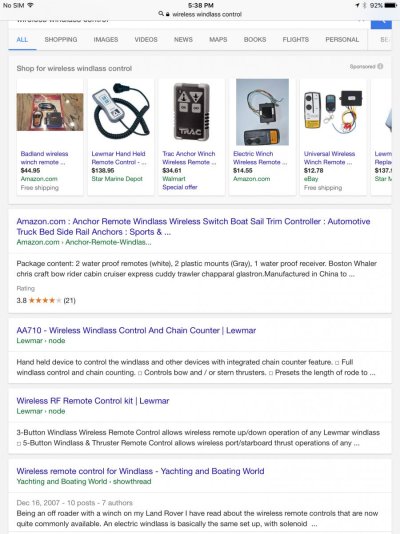Poach
Senior Member
- Joined
- Aug 5, 2013
- Messages
- 234
- Location
- United States
- Vessel Name
- Poach
- Vessel Make
- Sabreline Trawler
This may have been covered before, so if so, and you have the link, let me know.
I plan to cruise single handed in the Northwest this summer (wife still working). I dock, lock through and pick up mooring bouys just fine. But I am interested in any advice on anchoring single-handed. My boat is a 36' trawler with twin diesels. I have an upper and a lower helm station. I carry a plow anchor on all chain. The windlass controls are on the bow and I do not have a remote for the windlass. Most of my anchoring will be in 35' or less and while wind might be a factor some times, current should not be an issue. I did some single handing way in the past but am way rusty. I looked for an article or a you-tube without success. If you know of any that will help please let me know. Your thoughts and suggestions will be much appreciated.
I plan to cruise single handed in the Northwest this summer (wife still working). I dock, lock through and pick up mooring bouys just fine. But I am interested in any advice on anchoring single-handed. My boat is a 36' trawler with twin diesels. I have an upper and a lower helm station. I carry a plow anchor on all chain. The windlass controls are on the bow and I do not have a remote for the windlass. Most of my anchoring will be in 35' or less and while wind might be a factor some times, current should not be an issue. I did some single handing way in the past but am way rusty. I looked for an article or a you-tube without success. If you know of any that will help please let me know. Your thoughts and suggestions will be much appreciated.





